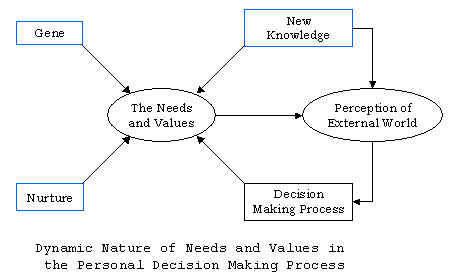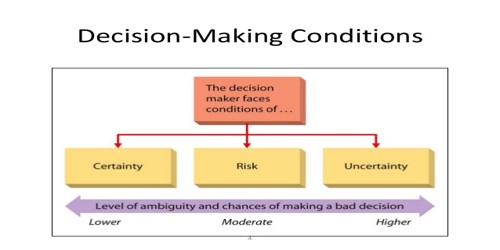
Step #8) Evaluate your results: It's essential to evaluate your results anytime you make a decision.Step #7) Implement the decision: The next to last step in the rational decision-making model is simply putting your decision into practice.Step #6) Choose the best alternative: After evaluating all possible alternatives, select the option that best matches your weighted criteria.Step #5) Evaluate your alternatives: For each possible solution you come up with, you should evaluate it against your criteria, giving extra consideration to the criteria you weighted more heavily.Step #4) Generate alternatives: Having defined and weighted the criteria you are looking for, it's time to brainstorm ideas and develop a few alternatives that meet your criteria.If some factors are more important, you will want to assign a numerical value to your criteria based on how important each factor is. Step #3) Weight your criteria: If all of the criteria you define are equally important to you, then you can skip this step.

For instance, if you are deciding on a new car, you might be looking for criteria such as space, fuel efficiency, and safety. Step #2) Define criteria: The next step is to define the criteria you are looking for in your decision.Step #1) Define the problem: You'll want to start by identifying the issue you are trying to solve or the goal you are trying to achieve with your decision.The steps of the rational decision-making model are: The rational decision-making model involves identifying the criteria that will have the biggest impact on your decision's outcome and then evaluating possible alternatives against those criteria. With that said, let's take an in-depth look at each model and the situations where each one is most applicable. Once again, each of these models takes a unique approach to decision-making, so it is important to choose the model that will work best for you and your unique situation. There are five main decision-making models designed to help leaders analyze relevant information and make optimal decisions. If you want to improve your decision-making approach, mastering the five decision-making models is a great place to start. Given that only 20% of team members say that their organization excels at decision-making, most organizations and team leaders have a lot of room to improve in this area. Because different decision-making models take different approaches to this goal, it's important to match the model with your unique situation and leadership style. Defining decision-making modelsĭecision-making models are frameworks designed to help you analyze possible solutions to a problem so that you can make the best possible decision. To help you improve your problem-solving abilities and make better decisions, let's take a look at five proven decision-making models and when you should use them. When instinct and reasoning alone aren't enough to pinpoint the best decision out of your available options, it can often be helpful to utilize a decision-making model.Ī decision-making model works by walking you through the decision-making process - and there are several such models available for you to choose from. However, settling on the best course of action is often easier said than done. To make decisions in these circumstances, managers must acquire as much relevant information as possible and approach the situation from a logical and rational perspective.Making effective decisions is a critical leadership quality.

In 3 situations, managers have to take different decisions. Moreover, they cannot evaluate the interactions of the different variables. Here, people have an insufficient database, they do not know whether or not the data are reliable, and they are very unconfident about whether or not the situation may change. In this case, the decision-maker does not know all the alternatives, the risks associated with each, or the likely consequences of each alternative. In this condition, the decision-maker does not know all the alternatives, the risk associated with each, or the consequence of each alternative is likely to have. The worst-case rate is 13 percent.īy taking this approach, he can at least reduce some uncertainty and get firmer support for his decision.

Vin Diesel might consider that for the variable rate loan the best case rate is 9 percent. Vin Diesel who is considering whether to finance a new building by taking a fixed interest rate loan of 10 percent or a variable rate of the loan that begins at 9 percent but could increase by 4 percent. The research can tell them more about their alternatives, give them a firmer basis for estimating possible outcomes arid help them look at the best and worst alternatives.


 0 kommentar(er)
0 kommentar(er)
